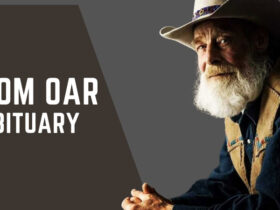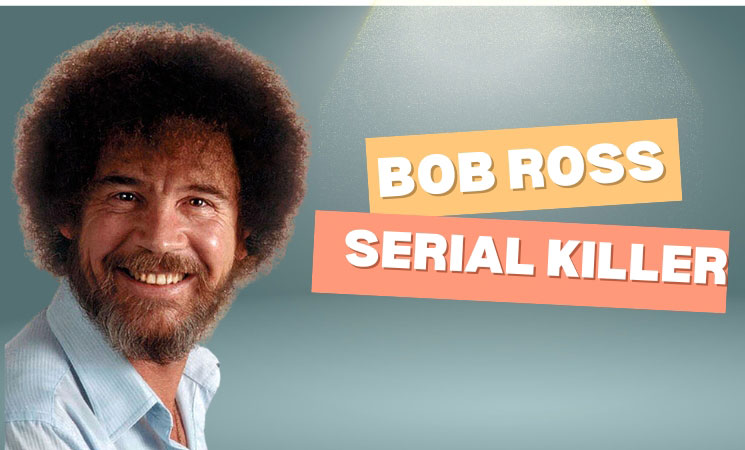Known for his calm voice and “happy little trees,” Bob Ross became an icon for creativity and kindness. But recently, bizarre rumors have emerged, suggesting a dark twist to his legacy. Here’s the truth.
Debunking the Myth
There is no evidence or credible source linking Bob Ross to any criminal activities. His life and career were well-documented, and he spent his time either on camera, teaching, or working with his production company. The serial killer theory seems to be a product of internet “dark humor,” contrasting his peaceful demeanor with a fictional sinister side.
In an interview with The New York Times, his former colleague Annette Kowalski, who co-founded Bob Ross Inc., described him as “gentle, kind, and deeply committed to teaching.” According to those who knew him, the rumor couldn’t be further from the truth.
The origin likely stemmed from the stark contrast between Ross’s famously calm, friendly demeanor and the shocking concept of a serial killer, making it ripe for dark humor in meme culture. However, the rumor is entirely unfounded and was never reported seriously by any credible sources.
10 Fascinating Facts About Bob Ross and His Iconic Paintings
His legacy includes over 30,000 paintings and a legion of fans whom he taught the joy of painting. Here are some interesting, publicly known facts about Bob Ross and his iconic paintings .
Disclaimer: All information has been thoroughly researched and compiled from credible public sources.
- 1. During his lifetime, Bob Ross created thousands of paintings for The Joy of Painting series. Surprisingly, he rarely sold them. Instead, most were donated to PBS stations for fundraising or kept by Bob Ross Inc., making authentic pieces rare collectibles.
- 2. For each episode of The Joy of Painting, Bob Ross painted the same scene three times. The first was his reference painting, the second was painted live on air, and the third was created afterward for close-up photography used in instructional books.
- 3. Though Ross is remembered for his curly hair, the perm wasn’t originally his choice. He permed his hair to save on haircuts, and it later became his signature look, encouraged by his brand to maintain consistency.
- 4. Bob Ross didn’t attend formal art school. His journey began in the U.S. Air Force, where he learned the “wet-on-wet” technique from artist Bill Alexander, allowing him to complete a painting in under 30 minutes.
- 5. While stationed in Alaska, Ross found inspiration in the snowy mountains and dense forests. His “happy little trees” and serene landscapes reflect his appreciation for nature’s beauty and tranquility.
- 6. Original Bob Ross paintings are not readily available on the market1. Most are preserved by Bob Ross Inc. or PBS, so when they occasionally appear, they can sell for over $10,000.
- 7. Bob Ross became a pop culture icon not only for his art but for his calming, positive presence. Fans worldwide watch his episodes for relaxation, often calling it “art therapy.” His influence goes beyond painting, with his philosophy encouraging creativity and acceptance of “happy little accidents.”
- 8. Bob Ross preferred to create landscapes free of human presence, aiming to make viewers feel they could “step into” a peaceful, untouched world. His nature scenes emphasized solitude and connection with the outdoors.
- 9. After Ross passed away in 1995, Bob Ross Inc. continued to promote his legacy through books, workshops, and art supplies. Today, they work to keep his teachings accessible to new generations of art enthusiasts.
- 10. His “wet-on-wet” technique has been adopted by art instructors globally, and his books offer detailed guidance for those inspired by his show. Fans and new learners alike find joy in his simple, approachable methods.
If we take a look at Bob Ross’s official Instagram, we find a delightful mix of merchandise, events, and messages that bring his legacy to life. Items like the Happy Little Trees Baseball Hat and events such as the Run for the Trees: Happy Little Virtual 5K showcase how his positive impact extends beyond painting.
The Run for the Trees event, which began in Michigan, has grown to support tree-planting initiatives in nine additional states. Participants receive a T-shirt, medal, and bib as tokens of appreciation, symbolizing the love for nature that Bob Ross inspired. Whether walking, running, or rolling, fans participate from anywhere, embracing his spirit of creativity and environmental appreciation.
Bob Ross’s social media channels continue to embody his love for art, nature, and community, showing how his influence remains evergreen through new projects and fan engagement.
Bob Ross didn’t just inspire millions through The Joy of Painting; he also left a lasting mark with his instructional books. These books provided step-by-step guides to painting landscapes, making his techniques accessible for beginners and enthusiasts alike. Here are a few essential titles that capture his vision and style:
“The Best of the Joy of Painting with Bob Ross”
- Published in 1989, this book includes popular scenes from his show with instructions to recreate them.
“Bob Ross’ New Joy of Painting”
- Released in 1993, this book offers fresh projects inspired by Ross’s iconic techniques, reflecting his love of nature.
“The Joy of Painting” Series
- Throughout the 1980s and 1990s, Ross released various editions in this series, covering different landscapes and seasonal themes.
“Happy Little Accidents: The Wit & Wisdom of Bob Ross”
- Published in 2017, this book, released posthumously, shares Ross’s life philosophy and positive outlook on creativity.
Hot News:-
Omari Mccree Still Alive: The Story Of A Bmf Snitch
When Bob Ross Created His Art
Bob Ross’s journey into painting began while stationed in Alaska with the U.S. Air Force. Inspired by the Alaskan landscapes, he started studying painting and was later introduced to the “wet-on-wet” technique by his mentor, Bill Alexander. This technique, also called alla prima, allowed him to complete entire scenes in under 30 minutes, a skill he showcased on his PBS show, The Joy of Painting, from 1983 to 1994.
Through his books and episodes, Ross encouraged viewers to embrace creativity. By the end of each 30-minute show, he would complete a full landscape painting, often featuring mountains, rivers, and his beloved “happy little trees.”
Many know Bob Ross, the iconic painter, but fewer know about his son, Steve, who continues his father’s artistic legacy.
Bob Ross’s son, Steve Ross, shared more than just a name with his father; he shared a passion for painting and teaching. While Bob Ross became a household name through The Joy of Painting, Steve occasionally appeared on the show, displaying a similar calm demeanor and natural talent.
When Bob Ross passed away in 1995, Steve stepped back from the public art scene. He took time away from painting professionally, leading a quieter life. Over the years, fans of Bob Ross often wondered about Steve, hoping he would one day return to painting.
In recent years, Steve has re-emerged in the art world, teaching painting workshops across the United States. Fans, both of his and his father’s, are thrilled to see him continue the Ross legacy. His teaching style is reminiscent of his father’s gentle, encouraging approach, making art accessible and enjoyable.













